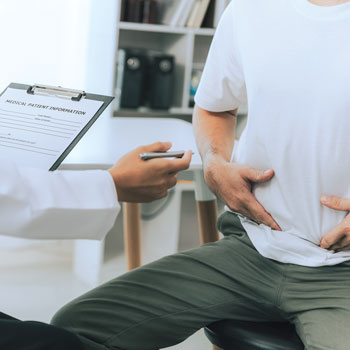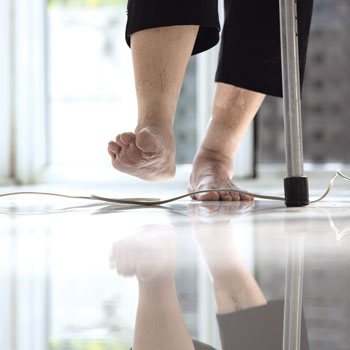Fall prevention, abdominal pain, and more stories
This month's issue covers falls among older adults, addressing abdominal pain, and issues among medical education.
Falls are always a nuisance no matter your age, but for older adults, they're especially likely to lead to a cascade of problems. Federal data show that more than 14 million U.S. adults report falling each year and that more than a third, 37%, require medical care or temporarily restrict their activities after a fall. Our story highlights what primary care physicians can do about this issue, with suggestions ranging from boosting awareness, testing mobility, and managing medications, among others. For the most success, according to experts, multifaceted interventions and continual attention are key.
Another story offers an overview of a topic that's always of interest to our readers: addressing abdominal pain. At the American College of Gastroenterology's most recent annual meeting, held in October in Philadelphia, three physicians reviewed this symptom's broad differential diagnosis, discussed the newest research on neuromodulators, and provided a roundup of the latest digital tools for patients interested in next-level symptom management.
What happens when your mentee gets stuck on a project? This can be a difficult situation to manage, but this issue's I.M. Ready has you covered with tips that include showing patience, clearly outlining a process, breaking a project into manageable pieces, knowing when to push, and demonstrating the importance of a finished product.
Residency is challenging, and especially so for those going through it during the early years of the COVID-19 pandemic. Those learners dealt with unprecedented events during one of the most pivotal times in their lives, with potentially lasting effects. The internal medicine program director at the University of California, San Francisco, offers her thoughts on how medical educators can rebuild trust and reconnect with trainees, including fostering community, having empathy, and prioritizing joy.
Other clinical coverage in this issue includes a feature on obesity hypoventilation syndrome, a respiratory condition with nonspecific symptoms such as daytime sleepiness and extreme difficulty breathing. With rates of obesity in the United States continuing to climb, internal medicine physicians will be seeing more patients with this disorder, experts said. Our story reviews its diagnostic criteria, its connection to obstructive sleep apnea, and options for treatment.
Also in this issue, Pearls from I.M. Peers offers advice on breast cancer prevention in primary care, ACP's President discusses the importance of the National Health Service Corps, and our Senior Vice President, Governmental Affairs and Public Policy, outlines the ongoing importance of advocacy in the wake of the 2024 election.
We wish you a happy and healthy 2025 and look forward to another year of bringing you the latest in internal medicine news. Please let us know what you'd like to read about at immatters@acponline.org.
Sincerely,
Jennifer Kearney-Strouse
Executive Editor




